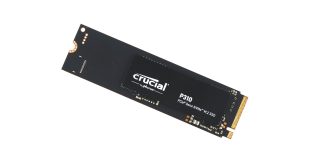Marvell, one of the world’s leading developers of SSD controllers, on Wednesday unveiled the industry’s first controller for solid-state drives that officially supports SATA Express interconnection technology.
The Marvell 88SS1083 controller supports PCI Express 2.0 x2 as well as SATA Express interconnection and thus can power solid-state drives with up to 1GB/s transfer rates. The controller supports various types of NAND flash memory, including the latest 15nm MLC [multi-level cell] NAND flash from Toshiba and possibly even more advanced types, with different interfaces, including toggle DDR 2/ONFI 3 at 400MT/s rate.
The new 88SS1083 controller also supports the separate reference clock with independent spread spectrum clocking architecture (SRIS) technology, which is crucial for SATA Express and other PCIe-based interconnections made using cables. In addition, the 88SS1083 controller supports DevSleep and L1.2 PCIe low power state, which provide another level of power management when the drive is almost completely shut down, allowing devices to be always on and always connected without reducing battery life.
The 88SS1083 is currently sampling to lead customers and is scheduled to be in mass production in Q4 2014. The chip will be made using 28nm process technology.
If Marvell plans to ship the new controller in late 2014 or early in 2015, then it makes sense to expect availability of SATAe-based SSDs already in the first quarter of next year.
Discuss on our Facebook page, HERE.
KitGuru Says: While the SATAe interconnection technology for storage devices will not hit the mass market for several quarters, manufacturers of solid-state drives and other computer components should start to get ready for it right now. Looks like Marvell is just right on time with its new controller. It will be interesting to see whether its rivals (LSI SandForce, Phison Electronics, etc.) also plan to unveil their SATAe SSD controllers at Computex Taipei trade-show next month.
 KitGuru KitGuru.net – Tech News | Hardware News | Hardware Reviews | IOS | Mobile | Gaming | Graphics Cards
KitGuru KitGuru.net – Tech News | Hardware News | Hardware Reviews | IOS | Mobile | Gaming | Graphics Cards




Samsung released its controller more than a year ago and has higher performance.
Samsung used 14nm. Marvell is using 28nm and is slower. Marvel is more than 1 year ‘behind’
June 17, 2013
Samsung XP941 enables a sequential read performance of 1,400MB/s (megabytes per second), which is the highest performance available with a PCIe 2.0 interface.